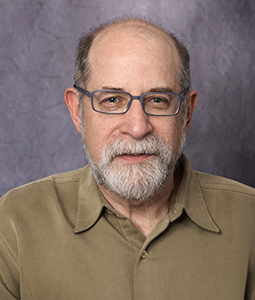 Mass hysteria is often different from what we imagine.
Mass hysteria is often different from what we imagine.
Barry Markovsky, professor of sociology at the University of South Carolina, describes how looking at individuals can change the perception of the whole.
Ph.D. Stanford University (1983) His research interests include group processes, social psychology, social networks, methods of theory construction, experimental research, and computer simulations. His current research addresses social status, identity, fairness perceptions, cooperation, and influence in small group contexts. He is also developing on-line tools for building, evaluating and disseminating sociological theories. He teaches courses in group processes, pseudoscience and paranormal beliefs, and theory construction.
Mass Hysteria
Have you been hearing about mass hysteria in the news lately?
I’ve learned that looking at people through a social lens, in addition to a psychological one, reveals things that you wouldn’t otherwise see. Sociology shows how groups can have characteristics of their own that don’t necessarily exist in any of the people within them. A simple example: Every single member of a hung jury can have a definite opinion about innocence or guilt, while the jury as a whole remains hopelessly indecisive. The hung jury can’t decide, and that’s a very real and consequential outcome. And yet it reflects the opinion of not one single person in the group.
Try to keep that in mind when you see news reports about so-called mass hysterias, such as alleged incidents in the past 18 months at the U.S. embassies in Havana Cuba and Guangzhou [gwang-joe’], China. Dozens of people claim to have suffered physical harm as a result of being attacked by some sort of high-tech sound-generating device. All investigations point to there being no such machine, while other characteristics of the events are consistent with mass hysterias of the past.
The symptoms that the victims experience are real, but the evidence points to a social source rather than a mechanical one. Conditions were ripe in both places: a group of tightly interconnected people, relatively disconnected from the outside, distressing events happening all around them; then a chain reaction of fear, suspicion and scapegoating is triggered. The resulting stress is quite real, and only gets amplified as it spirals around the group, taking a physical toll among the most vulnerable.
No, they’re not crazy. They’re normal human beings in a normal human group that’s misfiring under abnormal circumstances.

Comments
One response to “Barry Markovsky, University of South Carolina – Mass Hysteria”
Mass hysteria is not known to cause nerve damage, as has been shown in those afflicted, as reported by the NYT:
https://www.nytimes.com/2018/12/12/world/americas/cuba-embassy-attacks.html
and in the paper cited by the NYT:
https://onlinelibrary.wiley.com/doi/full/10.1002/lio2.231
This gives me another instance to enjoy being a member of the american Psychiatric Association, which enjoins against psychiatrists diagnosing from afar people they haven’t examined.